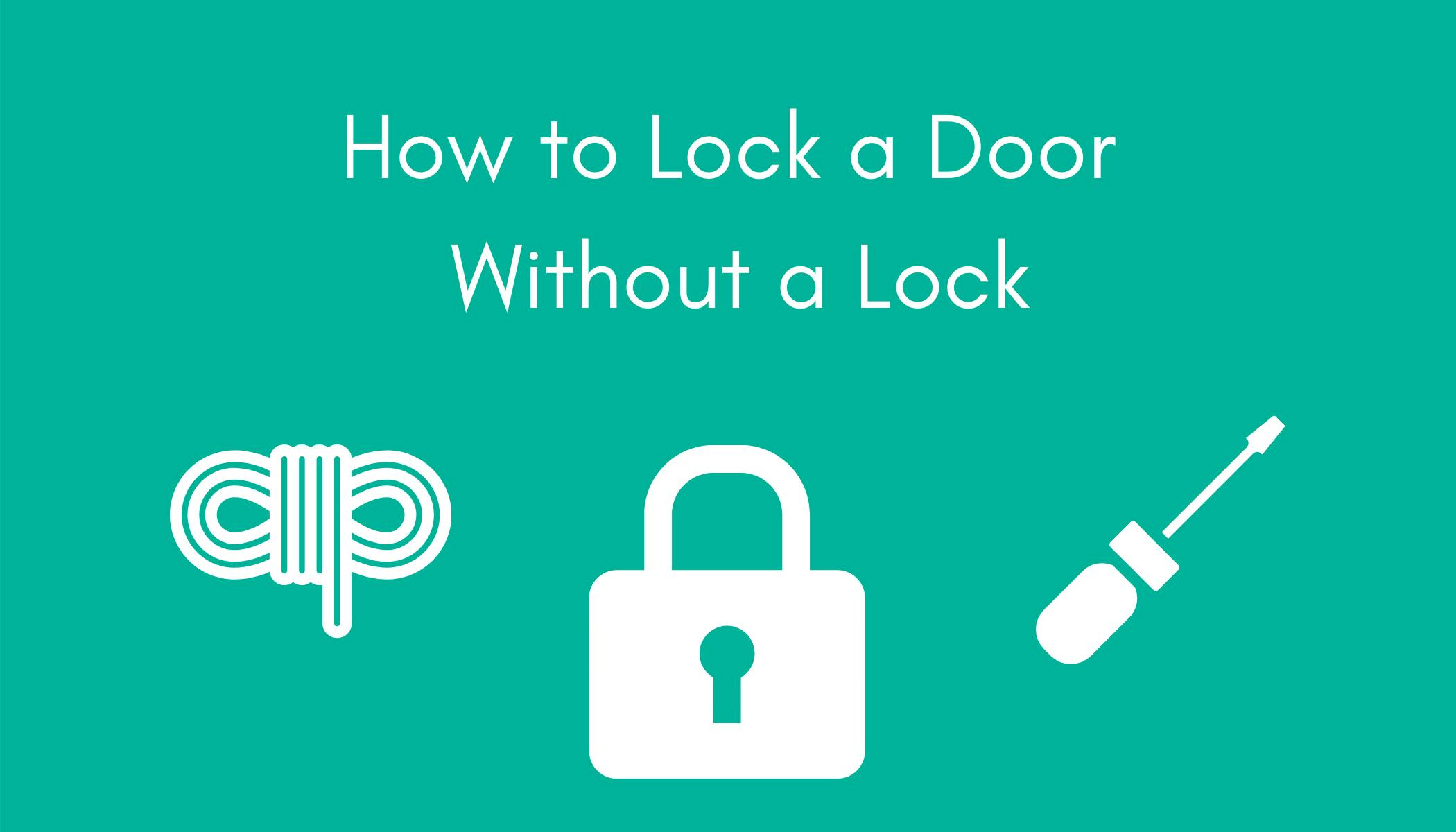
Locking a door without a lock sounds impossible, or at least extremely difficult. However, there are actually several simple tricks that make locking lockless doors uncomplicated and easy. But, before we share our simple tricks, why would you want to lock a door without a lock?
There are doors in every home that are lockless. They’re meant to be used as a door from one room to another and not as a security measure. Often, bedroom doors, closet doors, and pantry doors will not have locks. In some cases, however, you may want to lock the door. A locked bedroom door can give you more privacy, and help you to feel safer. This might be because you want more privacy, or you want to protect and secure something important behind the door. No matter the reason, locking the keyless door is easy, even without a lock. Just make sure that you have another way in and out of the now-locked door since the only way to unlock one of these locked doors is by unlocking it from the inside.
Now that you know why you might want to lock a lockless door, here are 5 easy tips and tricks that will lock a door within minutes.
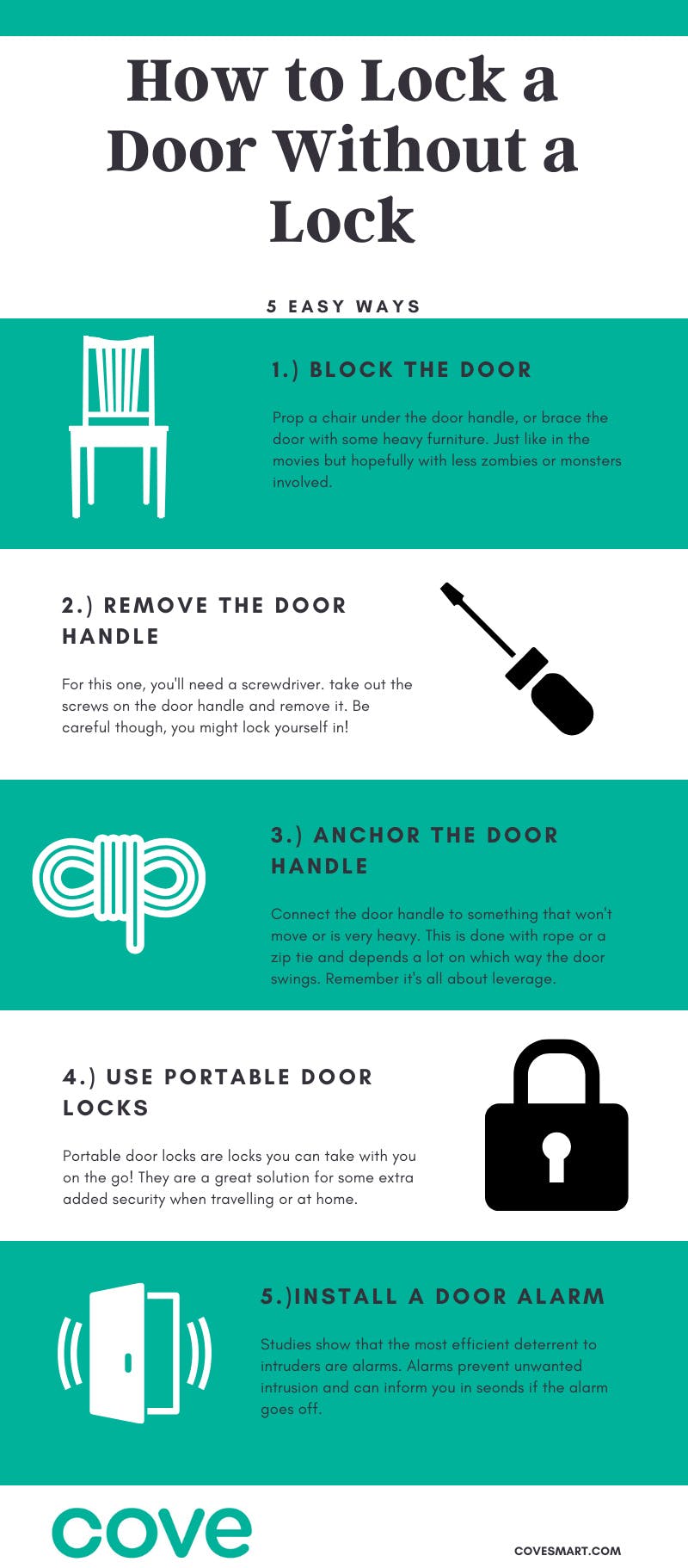
1. Block the Door From the Inside
The first, and perhaps the easiest of these easy tips, is to block the door. To successfully block the door, you will need to do it from the inside. If you try and block the door from the outside, the intruder can simply push the objects to the side. The fastest way to block a door from the inside is by placing a chair under the door knob. It’s likely that you’ve seen this maneuver done in movies, but we’ll help you accomplish it on your own.
To block the door with a chair, you will need a chair. The chair needs to be the right size to fit under the door knob. If the chair is too tall, it won’t have the right leverage, and if the chair is too short, it won’t be able to reach the handle. Once you’ve found a chair that fits under the knob, lean the chair on its back legs and wedge the back of the chair under the door handle against the door. If someone tries to open the door against the chair, the top of the chair will hit the door handle, making the chair sturdy as a barricade.
You can also block the door by moving furniture in front of the door. If you move a bookshelf or chest in front of the door, it will make it harder for the intruder to push the door open. Unless you’re trying to prevent the Hulk from busting through the door, it’s likely that moving furniture in front of the door frame will prevent anyone from getting the door open.
The last thing you can use to block a door is a door security bar. A door security bar works similarly to placing a chair under the door handle. It is secured under the door handle and connects to the floor at an angle. The angle prevents the door from opening inward. Another type of door bar is the outswing door security bar. This type of bar is installed parallel to the floor of the room and physically pushes up against the door. When someone tries to open the door, the door will collide with the bar. However, with an outswing door security bar, it will be difficult to lock and unlock the door.
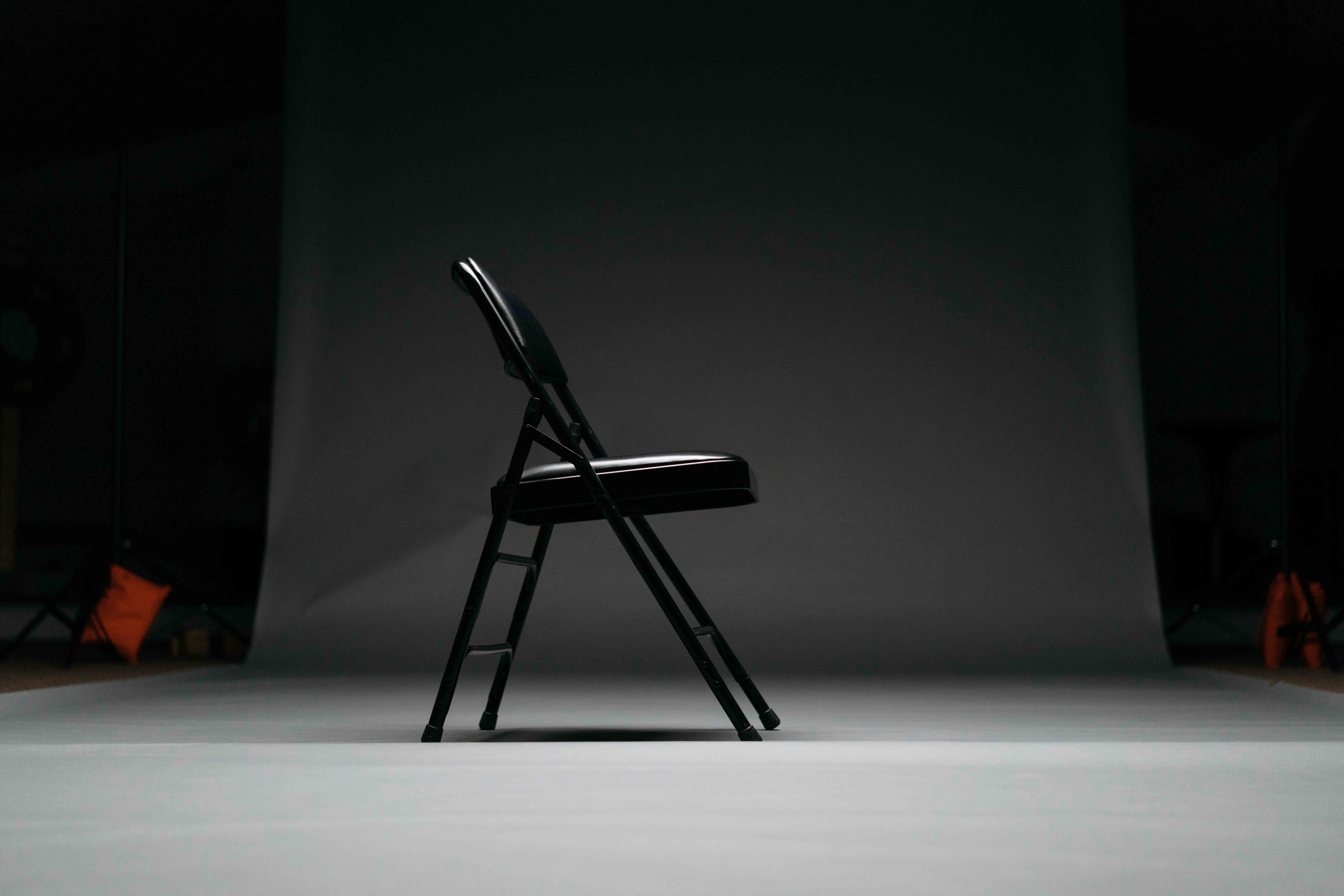
2. Remove the Door Handle
Another easy way to lock a door is by removing the handle. To describe this tactic briefly, a person can’t get into a room without using the door knob. If you remove the knob, the door won’t open. When a door handle turns, it retracts a latch. The latch is what closes a door and holds the door closed. When a door is locked, the lock is simply preventing the door handle from turning. If you are desperate to lock a door, then you can remove the knob on the outside of the door.
To remove the door handle, you will need a head screwdriver (such as a Phillips head screwdriver) or a flat head screwdriver. With the screwdriver, unscrew the bolts holding the door handle in place. When the bolts are removed, pull off the knob. For most basic doors, this should be the end of the process. Once the door handle is removed, however, you will need to put the handle back on to unlock the door from the outside.
We do not recommend that you use this trick unless you’re desperate to have a locked door. Once you remove the handle, you will be locked in the room. If the door is the only way out, you’ll have to replace the handle to get back out. This could possibly put yourself in a dangerous situation if a disaster occurs. This means that no one will be able to get to you, and you won’t be able to get out. If you’re trying to lock the bathroom door for privacy in your family’s home, we don’t recommend using this option. Instead, try communication. For simple door locks, we recommend trying other door lock hacks before removing the door handle.
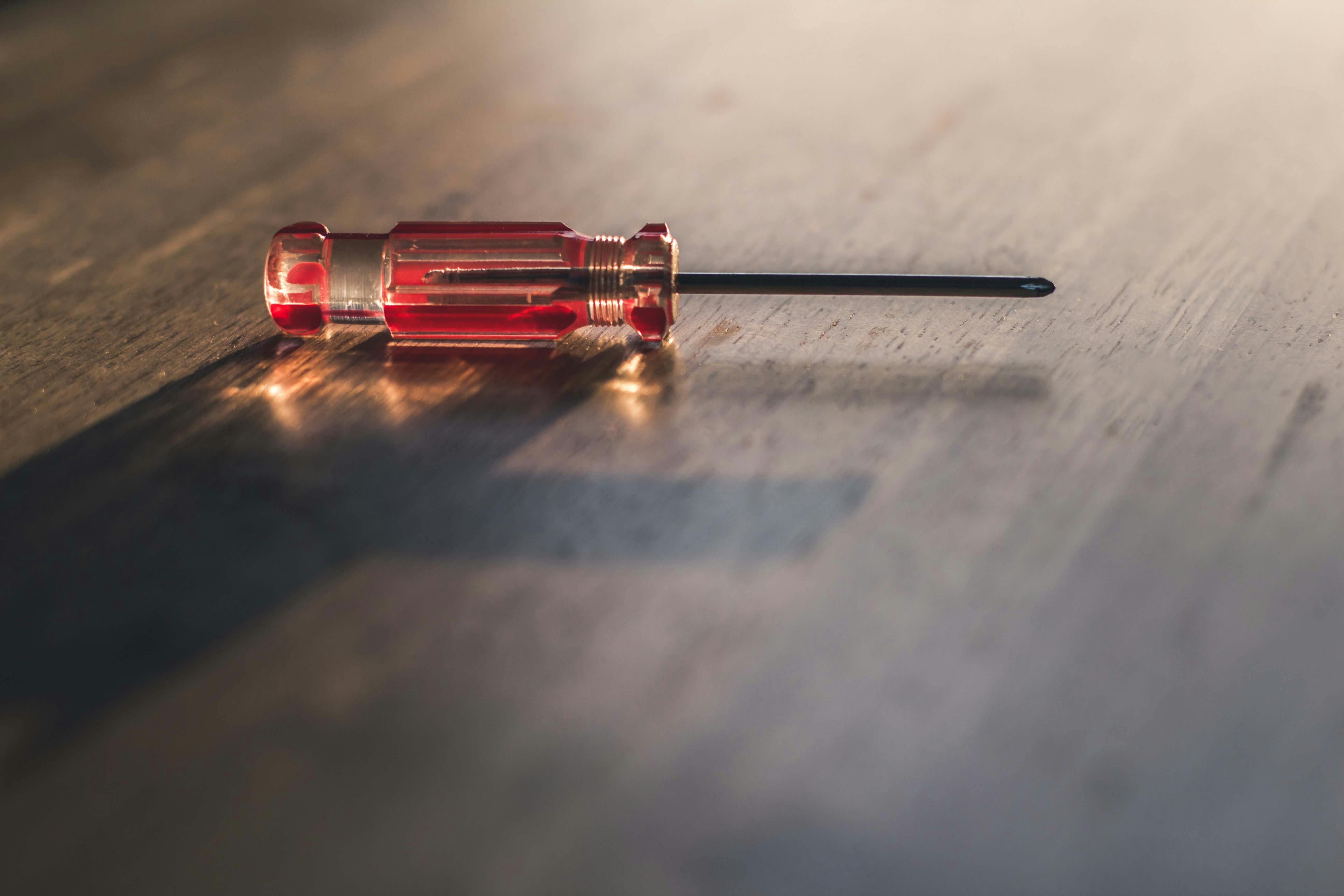
3. Anchor the Door Handle
Another way you can lock a door is by anchoring the door handle. Anchoring the door handle will physically prevent the door from being opened from the outside. If the door you’re locking swings outward, connect the inside handle to something sturdy in the room. It’s best to connect the handle to the bottom leg of a heavy piece of furniture or even to another door handle. This prevents the door from opening because of the weight behind the door handle. If the person on the other side of the door was to open the door, they would have to pull the entire anchor to get the door open.
For double-handle doors, tie the two door handles together. You can do this with rope, string, zip ties, or even a shirt. When the two door handles are tied, the door will open at the same time. However, since the doors open at the same time, the tie between the handles will only allow the door to open a few inches. This type of lock works best of french doors and double doors.
With this trick, you can get creative. You can find other ways to anchor the door handle and prevent the door from opening, though it might take some innovation on your part.
4. Use Portable Door Lock
A portable lock provides a temporary way to lock the door. The lock itself is completely portable and will move with you. The lock can be attached to the door in minutes and will also work to lock sliding doors, depending on the portable lock that you use. There are several types of portable door locks that you can use to secure a door.
The first type of door lock that you can use is called the Addalock. The Addalock is a branded portable door lock meant for doors without locks. It works by locking the handle of the door in place. Since the lock is portable, it can be used at hotels, AirBNBs, and while traveling. It adds additional security to any door, whether that door is in your home or while you’re traveling, and you want to feel safer.
Another portable door lock is the travelers security lock. This type of door lock is more advanced than the Addalock and provides additional security. It is completely removable and can be reused on different doors. It works best on inward opening doors. The difference between the Addalock and the travelers security locks is that the travelers security lock can withstand more force than the Addalock. For travelers looking to lock their doors against forceful entry, the travelers security lock might be a better option than the Addalock.
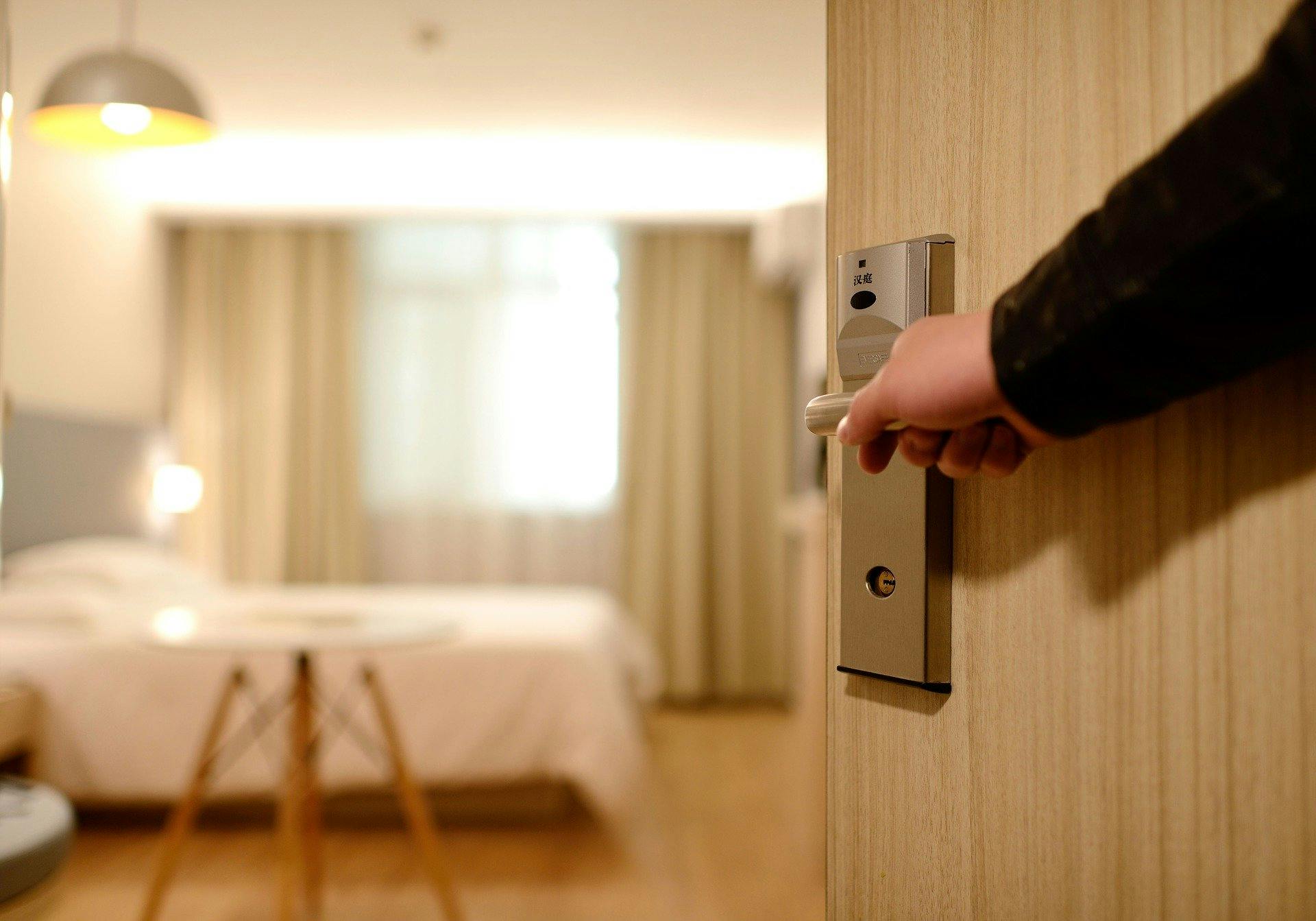
5. Install a Door Alarm
A door alarm “locks” a door in a different way than the other door locks. Instead, it prevents a person from entering a room because it sets off an alarm. The door alarm is installed on the door by connecting one part of the alarm to the door frame and the other to the door itself. When the door is closed, the two parts connect and create an electrical current. When the door is opened, the current is broken, and an alarm is triggered. Even if the intruder were to lock pick the door successfully, the alarm would still be triggered the moment the intruder opens the door.
If you’re worried about home intrusions, door alarms are one of the best ways to prevent someone from entering the house or a specific room. A study done by the University of North Carolina at Charlotte’s Department of Criminal Justice and Criminology determined that intruders are deterred most efficiently by alarms. Most burglars are good at lockpicking and are willing to shove through a door if needed. However, alarms scare burglars away because it alerts neighbors and local police authorities that something is wrong. So, although a door alarm doesn’t “lock” a door, it does provide the same safety benefits as a locked door.
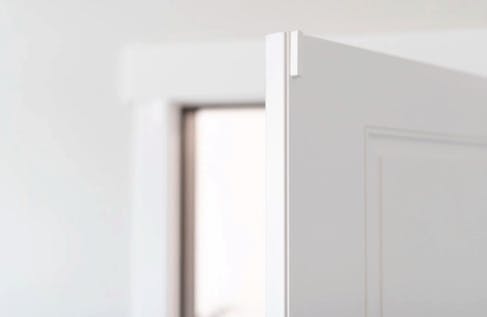
Safest Ways to Lock a Door
Now that you know how to lock a door, we think that it’s important to know the safest ways to secure the door. When it comes to door locks, not all locks are created equal. Some locks can be picked using a pin or quarter, while others are nearly impossible to break into. To have the best security for your home, you will need to ensure that your doors have the best locks.
If you’re looking for portable security, portable locks will always be your best option. In order to better secure your home, you should think more about what type of locks you use on your outside doors.
The safest door lock is a deadbolt. A deadbolt is able to withstand significant force, and it will be incredibly difficult for a burglar to break into a door that is locked with a deadbolt. The deadbolt has been tested and shown to be able to withstand 100 forceful kicks before it starts to degrade. That means that a burglar will have to forcibly pound the foot with their foot (or body slam) 100 times before the door begins to buckle under the weight.
Another effective lock to have on a door is the smart lock or smart deadbolt. A smart lock can be locked from your phone, meaning that you can control when the door is locked and when it opens. If the door is unlocked, you will get a notification. It’s best to get a smart lock that is actually a deadbolt lock to ensure that it has strength. Electronic locks, like the smart lock, help to ensure the safety of your front door. Smart locks may also come with a pin code or pin tumbler. This feature removes the need for a key, making the lock safer and more secure.
The last two locks that you can use on a door is the mortise lock or the latch bolt. Mortice locks are reliable and strong, meaning that they can be used on a variety of doors. However, we would recommend using deadbolt locks before a mortise lock because the mortise lock can be picked with a credit card or a simple set of lock picking tools (if the lock picker is experienced). The latch bolt adds additional safety and works as a second lock on any door. It is installed on the inside of the door and attached to the door frame using a chain. Although this is great as a second layer of security, it is not the best to use as your only door lock since the chain can be broken.
If you’re still desperate for a locked door that can’t be picked by a bobby pin, you can also use a door wedge or door jammer. If you’re trying to lock a sliding door, you can use a long piece of wood to stop the sliding door from moving.
Locking your door is an important step to feeling safer in your home. Locked doors deter criminals and can make you feel safer while you’re traveling. No matter your reason for wanting to lock your interior door, you should be entitled to that security and privacy.
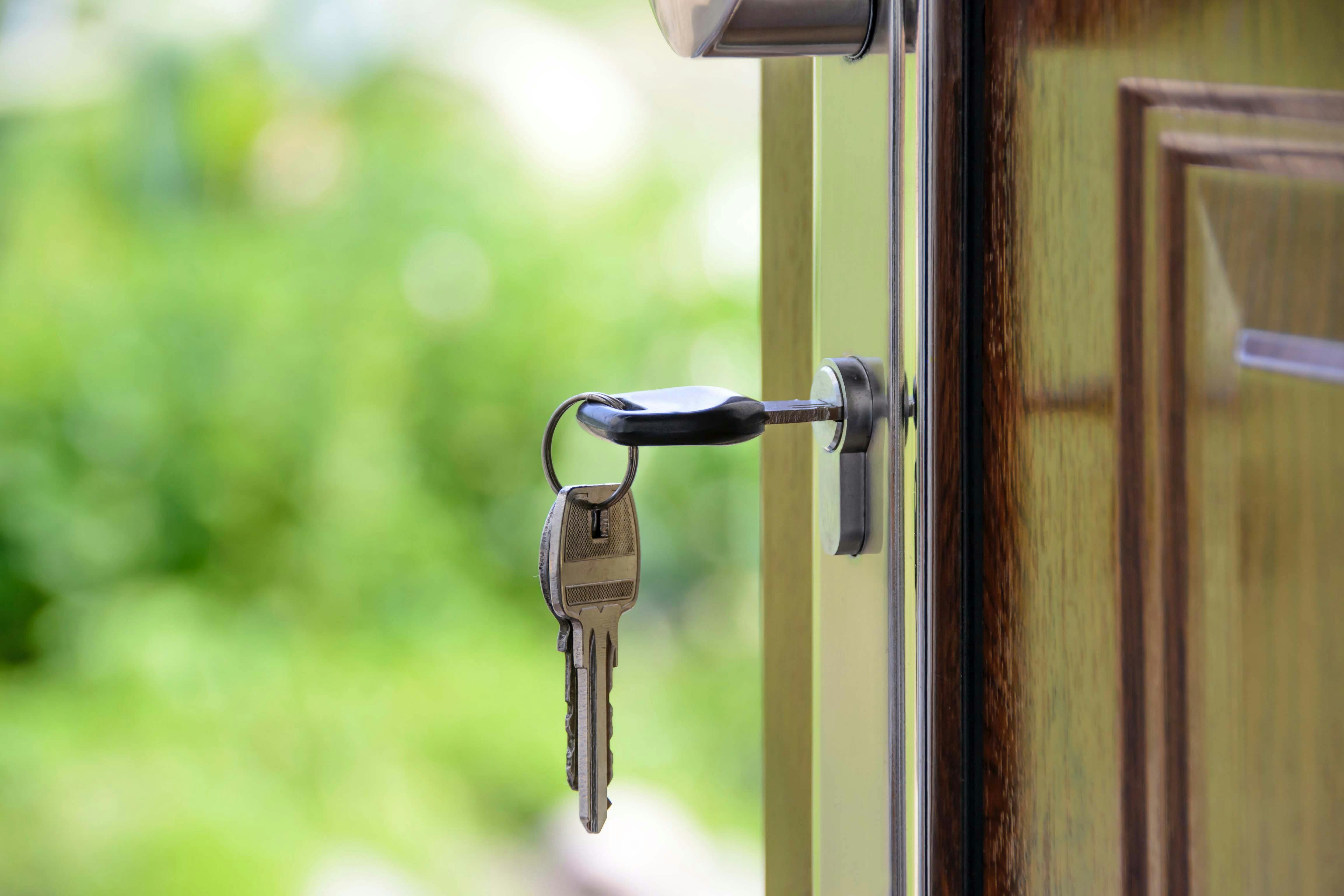
How to Fully Protect Your Home
Using a bedroom door lock or a door jam on an interior door can help protect the inside of your home from others who are already inside your home. But, how can you protect your home from those who are trying to get inside? Installing a door stop or door barricade on your front door isn’t an effective way to protect it.
You could also try installing a keyless lock with a key pin; however, this type of lock could still be kicked in. According to a survey done by an Idaho news station, burglars will sooner kick down the front door than break the glass on a window. The interviewed burglar specifically said, “I would kick in the door rather than break glass. Loud bangs are better than loud glass breaking, plus you run the risk of getting cut.” So, installing a keyless lock won’t stop the intruder from getting inside the home.
If your front door is a double door, you’re faced with a more difficult problem. A double door, or french door, is incredibly easy for burglars to open. All they have to do is apply enough force and the doors will buckle inward. So, how can you protect the doors of your home?
The first suggestion is to install a door alarm, which we mentioned earlier in this article. Door alarms are effective because they deter the burglar from entering the home. In KTVB’s survey, they asked 86 convicted burglars the question, “If a home alarm system went off, what would you do?” Most of the burglars responded that they would immediately leave the area. Staying in the area presented more risk than they were willing to take since all eyes in the neighborhood would turn in their direction.
Although many burglars choose to enter the house through the front, side, or back doors, many will resort to using windows, basement doors, and other sneaky ways to enter the house. Any exterior door or window could be used as a burglar entrance. In order to fully protect your home, you need more than a door alarm.
The best way to give your home full protection is by installing a home security system. A home security system protects more than your front door. It also protects your windows, your family, and your belongings. Home security cameras will provide proof and identification for the police and ensure that the home intruder is recognized and caught. Some devices that you can expect in a Cove home security system include:
- Door and Window Sensors. These small, easy devices are installed either below or above the doorknob. They emit a siren the moment the two parts are separated.
- Motion Sensors. Cove’s motion sensors use PIR motion detection, providing unparalleled security and protection at every corner of the home.
- Security Cameras. With full-range night vision, motion detection, and 7-days of free cloud storage, the Cove camera is the best option on the market.
- Touch Alarm Panels. The touch alarm panel acts as the center of your home security system. It where the homeowner can arm and disarm the system as well as use the “panic” option to call for immediate emergency help.
- Smart Smoke and Carbon Monoxide Detector. Although not traditionally considered “security,” smoke and carbon monoxide detectors are actually one of the most important tools to use in your home. These devices protect against fires and other threats to your home’s safety.
Homeowners can also protect their homes by physically changing the look and appearance of the home. There are several things that homeowners can do that will protect the home more than installing a locking mechanism on the door.
The most impactful thing that homeowners can do is to make it obvious that they have a home security system. Home security systems show that the home is protected. According to a study mentioned earlier The University of North Carolina at Charlotte, “indicators of increased security (alarm signs, alarms, dogs inside, and outdoor cameras or other surveillance equipment)” are one of the biggest deterrents to home intruders. Burglars don’t want to get caught and home security systems increase their chances of getting caught red handed. UNC Charlotte’s study also confirmed three other statistics about burglars and home security systems:
- “Within a broad set of potential target hardening deterrents, alarms and outdoor cameras and other surveillance equipment were considered by a majority of burglars.”
- “About 60% of the burglars indicated that the presence of an alarm would cause them to seek an alternative target altogether.”
- “Most burglars would try to determine if an alarm was present before attempting a burglary. Among those that determined that an alarm was present after initiating a burglary, about half would discontinue the attempt.”
Another way homeowners can discourage intruders is by giving the home the impression that somebody is there. You can do this by simply leaving the radio or TV on if you are leaving the home for a few hours. KTVB’s survey revealed that “most burglars feared someone might be home if they heard a radio or TV. They wouldn’t break in.”
The final tip for deterring burglars is to leave a car in the driveway. If you’re able, leaving a car in the driveway will stop a burglar in their tracks. Most will assume that someone is home because there is a car home. Leaving a car in the driveway will convince over 90 percent of burglars to look for a new target or come back another day.
